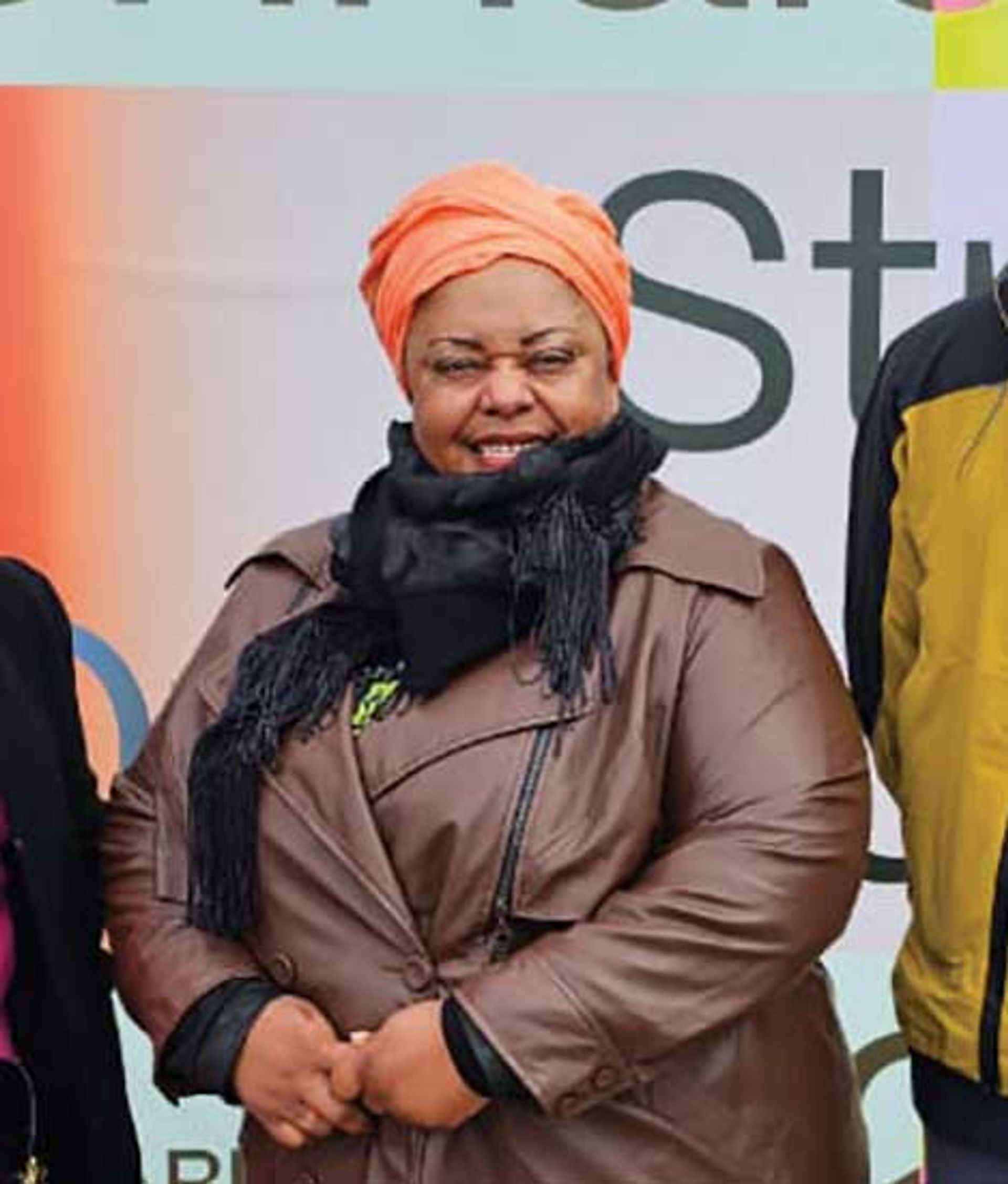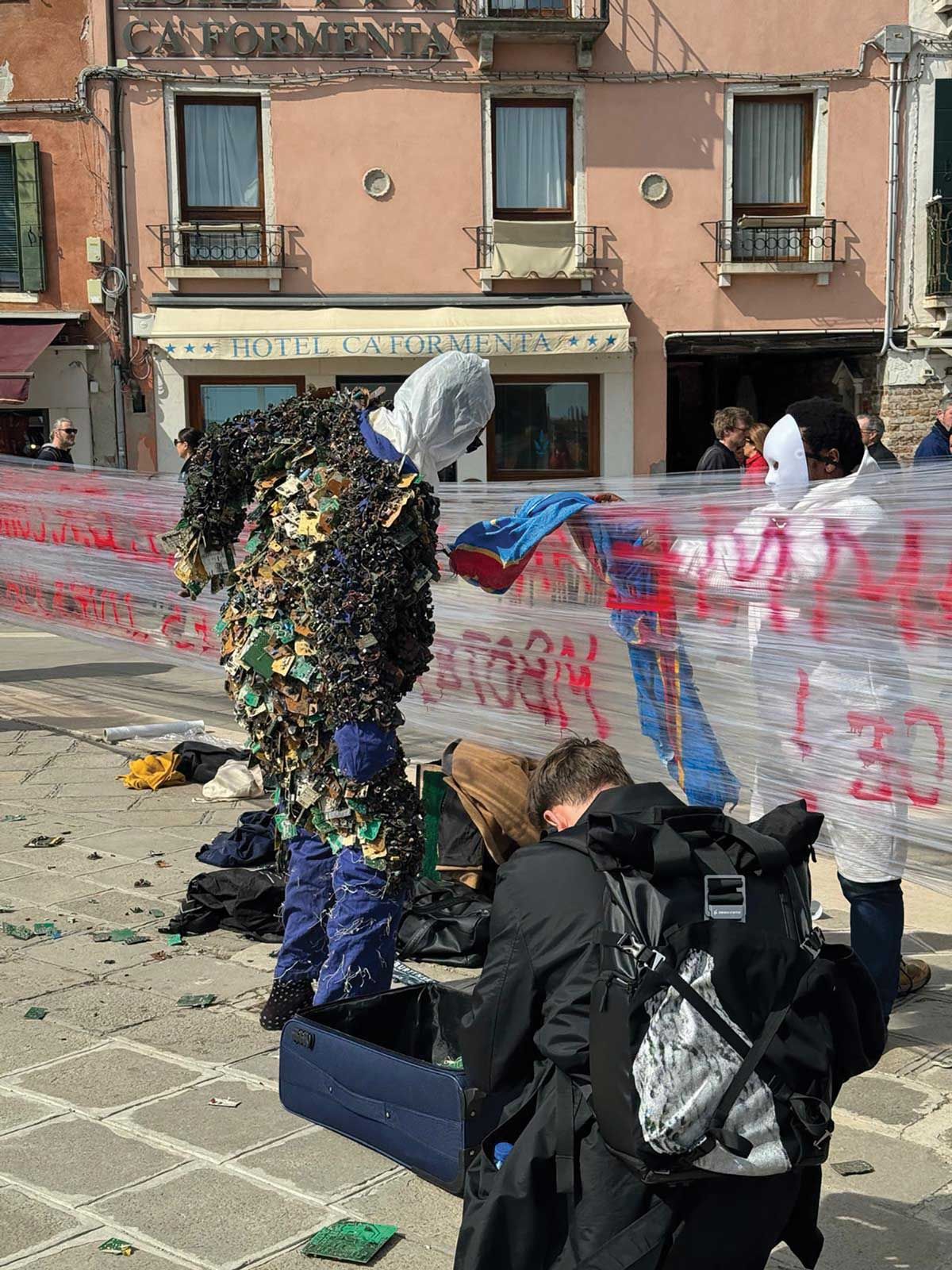As nations around the world celebrated the opening of their pavilions at the Venice Biennale in April, one country was missing: the Democratic Republic of the Congo (DRC). Instead, three of its artists, Aimé Mpane, Eddy Ekete and Steve Bandoma, staged an impromptu series of performances outside the Giardini, called Invisible—a title that was befitting the artists’ predicament.
“It’s very important for the DRC to be present in Venice,” says Ekete, who runs the KinAct festival in Kinshasa. “Our government doesn’t yet realise the power of art for our country. We [artists] want to change people’s opinion of Congo as a country just filled with war.”
The artists had travelled from the DRC at their own expense to take part in the African nation’s national pavilion. But when they arrived, a few days before the opening, they were told they had no space to show their art because of a disagreement between the DRC’s ministry of culture and Michele Gervasuti, the Italian co-curator of the pavilion.
Demand for restoration work
Gervasuti, the founder of the Gervasuti Foundation, which is located in the Palazzo Canova where the DRC pavilion was meant to be housed, had offered the venue to the nation free of charge. The deal, according to Gervasuti, stipulated that the DRC had only to pay for maintenance of the works in the space. But during the opening week in mid-April, according to Catherine Kathungu Furaha, the DRC’s former minister of culture, arts and heritage, Gervasuti demanded the ministry pay for restoration work to make the palazzo suitable to host an exhibition—a sum the country could not afford.
In March, a representative from Nomad Gallery in Brussels, where many of the DRC artists’ works were held, visited the foundation and deemed the space unsuitable to stage a show. The London-based James Putnam, who was a co-curator of the show, says: “Most of the artworks I chose to represent the theme of Lithium [the mineral at the heart of the exhibition concept] were consigned to the Nomad Gallery in Brussels, which declined to ship them as they considered the [Gervasuti Foundation] exhibition space unsuitable. Also, no funds had been received from the DRC ministry to install the artworks and maintain them for the long duration of the Biennale. Without the artworks, a working budget and an approved exhibition space, it was obviously impossible for me to proceed as curator just two weeks before the Biennale’s opening.”
Kathungu Furaha confirms that the ministry was unable to make the payments: “We have major security issues in our country and do not have the money for the Gervasuti Foundation.”
Yet participating in the Biennale, she says, is vital for the DRC. Violent clashes between DRC’s army and the Rwandan-backed M23 Tutsi-led rebels in the east of the country have killed scores and displaced millions of people. The fighting is the result of a war that has lasted decades. “Art from the DRC has rarely been shown outside of the country; we want to show our talents to the world and better our image,” Kathungu Furaha says, adding that the ministry still intends to have a national pavilion at the Biennale.
New venue, new theme
In mid-April, after the ministry ended the agreement with Gervasuti, Kithungu Furaha travelled from Kinshasa to Venice; it was her first trip to the Biennale. During the trip, the ministry decided to find a new location, which it will fully fund, and change the theme of the show. “Lithium is not an appropriate theme for the pavilion because the exploration for the mineral hasn’t begun yet in DRC,” Kithungu Furaha says. “It would not be honest for us to stage a show under that title. We must represent what we have—our reality.”

The former culture minister of the DRC Catherine Kathungu Furaha at the Venice Biennale
Photo: Gratia Kalungero
The DRC ministry has now hired Gabriele Salmi, an Italian who has been living in DRC’s second city, Lubumbashi, for over 20 years working in NGOs and for Picha Art, an art centre co-founded by the Congolese artist Sammy Baloji. He has been tasked with helping to find a new space and manage the show. The artists’ travel and logistic expenses, Salmi says, are being paid for by the government.
“The pavilion’s controversy is as if the country has relived its recent 100 years of history in a few days,” Salmi says.
The new show, which was due to have a soft opening on 17 May, has still not opened. The works remain in packaging inside the pavilion's new location: a former chapel in the Castello district. The exhibition will be titled Vibranium, reflecting themes of restitution and the controversial exploitation of raw materials from DRC involved in the creation of new technologies. Featured will be works by the three artists who staged Invisible, plus Jean Katambayi Mukendi, Kongo Astronauts, Cédrick Sungo and Eddy Kamuanga.
Salmi explains that the show aims to express the tensions within DRC society, which have an uncanny resemblance to the saga surrounding the staging of its pavilion this year. “The DRC’s presence at the world’s most important art event can, more than a thousand lectures and articles and words, eradicate the image people have of the country as a place of chaos and war.”


